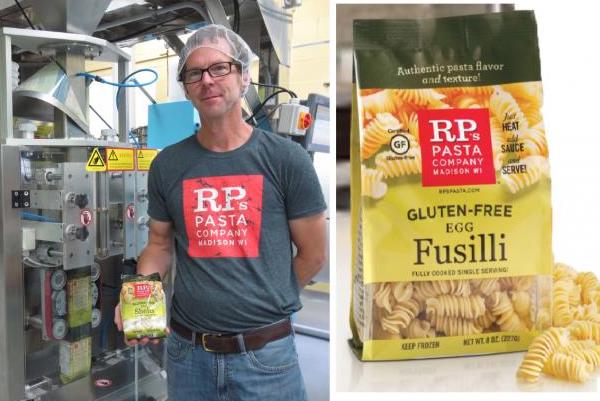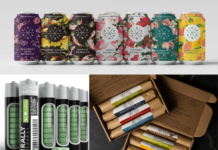
Subscribe: Apple Podcasts | Google Podcasts | Spotify | Email | TuneIn | RSS | More
In Edible-Alpha® podcast #43, Tera interviews Peter Robertson of RP’s Pasta, now part of the portfolio of brands with Tribe 9 Foods. Inspired by traditional northern Italian Semolina pasta, he began making fresh pasta himself. After giving the pasta as a Christmas gift in 1994, he received feedback from family and friends that he should produce the pasta as part of a business. What became RP’s began selling to restaurants and the farmers market in Madison to much success, leading to interest from grocery stores and regional distribution in the Midwest. Peter credits the Wisconsin Small Business Development Center with helping RP’s be more successful in those early stages.
One of Peter’s first challenges was category placement. Being fresh and needing to be refrigerated, the pasta was sold in the dairy or deli case. Both grocery buyers and customers were largely used to buying dried pasta not in the freezer case. Initially, the food service channel was a bigger sales channel for RPs but now only makes up 10-15% of their sales, with retail sales being the largest channel.
RP’s started moving with the consumer to come up with flavors that were non-traditional in Northern Italy, including unique flavors (for example squid ink linguini) and ingredients (for example, pasta made from red lentils). One of RP’s most successful products has been their line of gluten-free pastas. A trip to Expo West in 2010 validated the demand and uniqueness of their gluten-free SKUs, generating demand that spawned rapid growth of RP’s on a more national level. While Peter didn’t envision RP’s becoming known as a gluten-free brand, he moved with the consumer to build a great product to fulfill their needs and a niche, saying “if you are too rigid in business, you might get stuck.”
“If you are too rigid in business, you might get stuck.”
Peter Robertson, RP’s Pasta
Another challenge included breaking into the traditionally conservative food service channel, especially with their gluten free line. Since kitchens may not have a dedicated gluten-free cooking space, he developed a pre-cooked product that is easy for chefs to microwave or heat up in a sauté pan.
Managing growth and matching it with the right equipment setup/space has also proven a challenge. But, Peter’s skills and enthusiasm in product development and process engineering allowed him, for example, to build a small IQF line in their original space for producing their frozen products. However, Peter didn’t anticipate their storage needs for the throughput that RP’s was able to produce after adding new equipment, meaning RP’s quickly outgrew the space as they became more of a national brand. Growth in food companies often comes in stair steps, not linearly, and managing that growth is one of the hardest challenges for food companies.
Peter had mostly funded RP’s with free cash flow and bank financing until accepting the help of an outside investor during their rapid growth phase. In addition to helping with financing, the outside investor helped with getting a larger line of credit and help simplify their product assortment, reducing the amount of SKUs they had from 75 to 14 as they grew into a national brand. Peter reflected on how he started off wanting to have as little debt or outside investment as possible. But looking back, the right outside capital has been essential to supporting RP’s growth and allowing them to use their cash to ensure they could make payroll and other essential short-term obligations.
In 2017, RP’s merged with Yumbutter and Ona Treats to form Tribe 9 foods, forming a portfolio of brands with a co-packing line of business in a new facility big enough to house the in-house manufacturing for all three companies. Even with the right planning, many of their processes and workflows had to be continuously refined after moving into the new space and they still have to pay for off-site storage of finished products. Peter gave up the CEO role as part of the Tribe 9 merger and now focuses on new product development, process engineering, sales, something that he really enjoys because it allows him to be creative and keep many of the relationships he has built with RP’s.
Peter expects Tribe 9 to experience tremendous growth over next 5 years, especially in the growth of their private label and contract manufacturing lines of business. When he first started the business, space/equipment was the biggest challenge, not the competitive branding environment. In the current competitive environment, there are plenty of companies now that can make products for aspiring brands. Tribe 9 is able to capitalize on that evolving model so those companies can focus on building lasting relationships with your customers. As competition for consumers heats up, competition for attention from grocery store buyers has as well. As such, Peter cautions entrepreneurs to take great pains to be a solid partner for grocery store buyers in addition to their end-customers.


